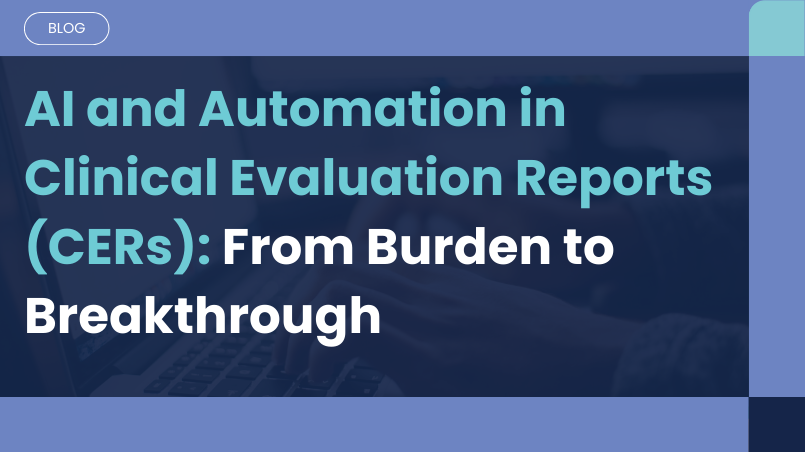AI and Automation in Clinical Evaluation Reports (CERs): From Burden to Breakthrough
Beyond Automation: How AI Transforms Clinical Evaluation Reports into Strategic Regulatory Assets
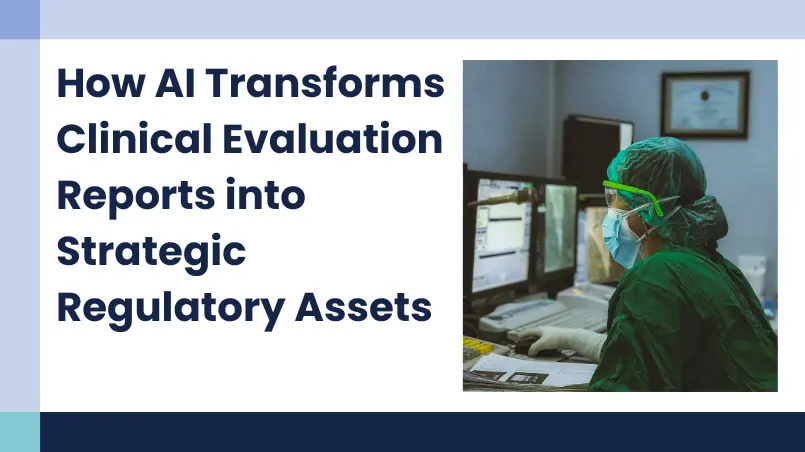
03 Oct, 2025
Clinical Evaluation Reports (CERs) have evolved significantly under the EU Medical Device Regulation (MDR). What was once a static, point-in-time submission is now a living dossier requiring continuous updates, traceable evidence, and alignment with real-world performance data. Technology and particularly artificial intelligence (AI) – is playing an increasingly critical role in helping manufacturers meet these expanding expectations.
From Static Documents to Dynamic Compliance
Under MDR Article 61 and Annex XIV, clinical evidence is no longer a one-time submission. Manufacturers must continuously monitor literature, post-market surveillance (PMS) data, clinical investigations, and competitor products to ensure safety and performance across the lifecycle of a device.
This shift has introduced significant challenges:
- Volume of Evidence: Literature reviews, PMS inputs, and registry data flood regulatory teams, increasing the burden of data triage and synthesis.
- Traceability Requirements: Establishing and maintaining links between clinical claims, data points, and source materials can be time-intensive and error-prone.
- Higher Scrutiny: Notified bodies are rejecting a notable percentage of CERs due to insufficient or poorly justified evidence, creating costly delays and rework cycles.
These challenges are prompting manufacturers to explore how AI and other emerging technologies can enable more scalable, audit-ready CER processes.
AI as a Clinical Evaluation Enabler
AI’s contribution to CER development goes beyond speeding up literature searches. At its most effective, AI integrates directly into regulatory workflows to provide:
- Contextualized Evidence Retrieval: AI tools can flag relevant studies based on the device’s intended purpose and risk classification, while filtering out non-compliant sources.
- Gap Identification: By comparing incoming data against MDR expectations or established templates, AI can proactively identify missing safety endpoints or weak benefit-risk conclusions.
- Intelligent Synthesis: Advanced algorithms can correlate findings from literature, PMS reports, and clinical studies, helping teams build stronger justifications for equivalence or performance claims.
These applications significantly reduce manual workload and improve the consistency and scientific quality of CERs.
Technology-Supported Workflows: From Evidence to Submission
An integrated, tech-enabled CER process typically includes:
- Centralized Evidence Foundation: Systems aggregate clinical and post-market data into a structured repository. AI layers can map the content against regulatory requirements highlighting deficiencies in equivalence data or long-term outcomes.
- Modular Document Generation: Instead of static document creation, modular authoring allows dynamic updates to background sections, benefit-risk profiles, and literature summaries. Some platforms also offer predictive analytics that signal which sections are likely to trigger notified body scrutiny.
- Post-Market Intelligence Loop: With MDR’s emphasis on continuous updates, technology can flag safety signals early, recommend updates, and even integrate with other quality systems (e.g., PMS plans, SSCPs).
For example, a manufacturer monitoring PMS reports from Asia-Pacific detected emerging safety trends weeks ahead of formal regulatory queries allowing proactive updates to the CER and avoiding potential findings.
Quantifying the Impact of AI-Driven CER Processes
While experiences vary, organizations adopting intelligent regulatory technologies often report measurable improvements:
| Metric | Traditional Approach | Technology-Enabled Approach |
|---|---|---|
| Literature Review Time | 400+ hours | <140 hours |
| CER Update Cycles | 3–6 months | 4–6 weeks |
| Notified Body Findings | Industry avg: 3.2 | In some cases: 0 major findings |
| Market Entry | Delayed by CER rework | Accelerated by several months |
Beyond efficiency gains, regulatory teams are also freed up to focus on higher-value tasks like supporting new indication expansions, refining clinical strategies, or collaborating more closely with notified bodies.
From Compliance Burden to Strategic Asset
When leveraged effectively, CERs can become more than just a regulatory requirement. They can support:
- Market Expansion: Well-structured CERs can support reimbursement strategies, additional market approvals, or competitive positioning.
- Data-Driven Strategy: Analyzing trends in regulator expectations across CER reviews can inform future development and risk mitigation strategies.
- Regulatory Agility: With regulatory requirements becoming more dynamic—especially in the lead-up to IVDR enforcement organizations need compliance infrastructure that evolves in parallel.
Some manufacturers are now embedding CER processes within broader regulatory operating systems, integrating authoring, surveillance, and quality management to enable real-time adaptability.
Conclusion: AI’s Role in the Future of CER Excellence
As regulatory expectations continue to rise, manufacturers are shifting from reactive compliance to strategic, data-driven evidence generation. Technologies like AI and advanced automation play a critical role in enabling this shift reducing manual workload, increasing document accuracy, and aligning internal operations with regulatory expectations.
Organizations that invest in these capabilities today are better positioned for faster approvals, stronger regulator relationships, and more agile market access strategies tomorrow.
Contact us at info@celegence.com to learn more.
Other Related Articles

08 Dec, 2025
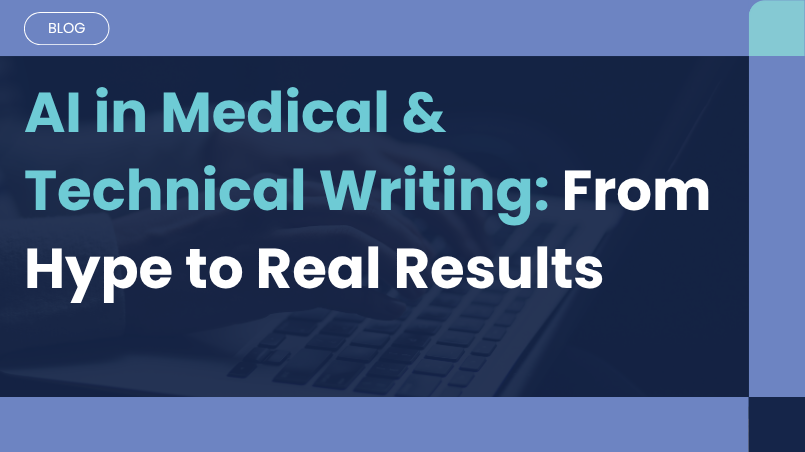
20 Nov, 2025
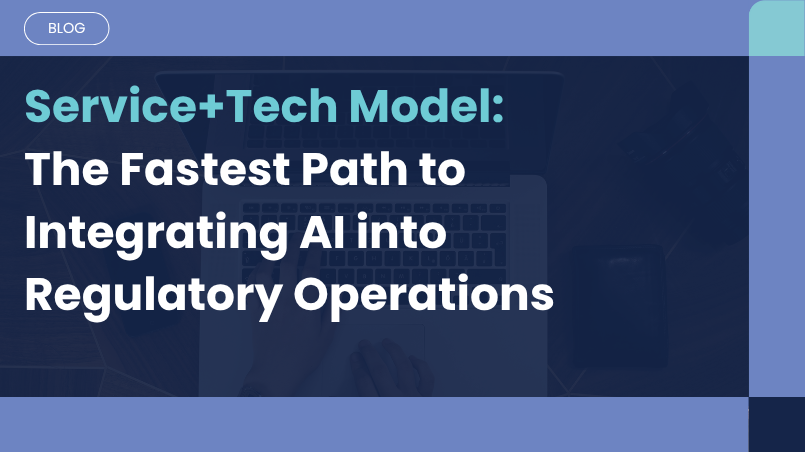
11 Nov, 2025
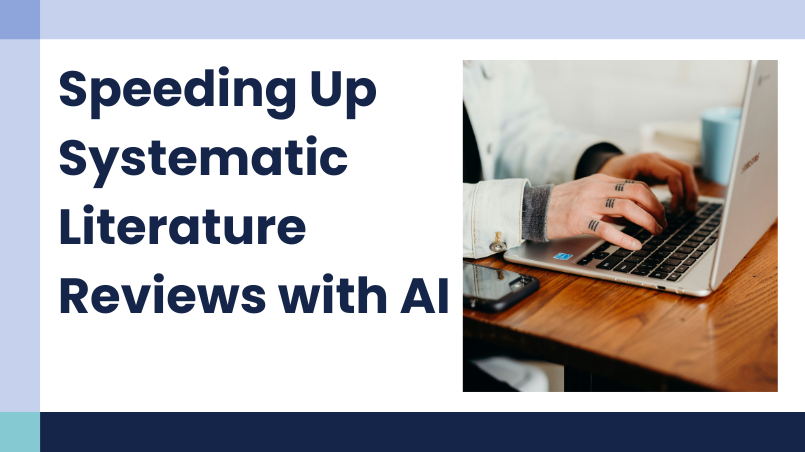
19 Sep, 2025
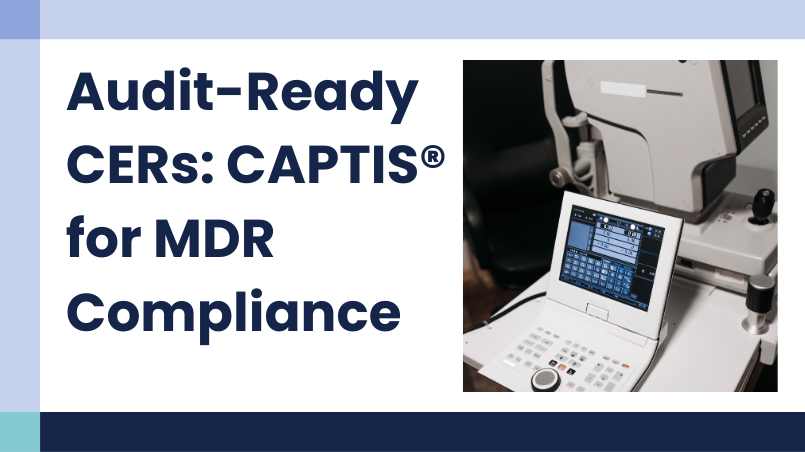
01 Sep, 2025

